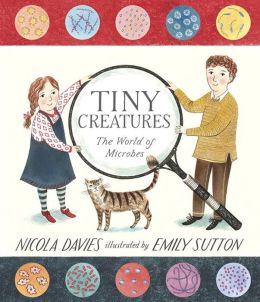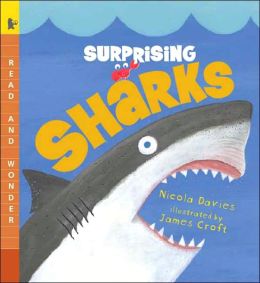There are lots of ways to teach conclusion-writing! In fact, my favorite way is to invite Nicola Davies to do it for me.
Well, of course I can't actually invite her. (Wouldn't that be amazing?) But having a huge collection of her books is the next-best thing. Davies has a gift for conclusion writing. Not only are her conclusions musical and just beautiful to read aloud, but they are simple enough to help young writers think, "I can do this!"
 Revisit Main Points
Revisit Main Points
Over the winter I bought Tiny Creatures: The World of Microbes for science class. It is a beautiful read-aloud for teaching about microbes and their role in decomposition. However, I found double purpose for it by using the conclusion as an example of writing a conclusion by revisiting main points.
The conclusion also engages the reader in thinking about what microbes are doing "right now"...which works well as a model for young writers. The entire book is a quick read-aloud, perfect for a 15-minute conclusion mini-lesson.
 End with the Title
End with the Title
I love Just the Right Size. While I have successfully learned how to like spiders, the idea of giant spiders still makes me shudder. Thankfully, Just the Right Size explains why giant spiders can't exist. Whew!
This book is a little more complex than Tiny Creatures, and is a longer read aloud. I used it with a fluency group before we read a series of math texts. We were talking about how authors signal big math concepts in math texts, and this book is a great example.
In this book, the conclusion also revisits main points from the text, but Davies structures it so that the conclusion ends with the title of the book. Young writers love this strategy. In the passage-based essays that students wrote this week, students had to explain how the text supported that wood frogs are "tiny forest survivors". Ending the essay with this same phrase was a natural kind of conclusion, and Just the Right Size models how this can be done.
Connect the Introduction to the Conclusion
I have to admit that this is my favorite technique for introductions and conclusions. When authors use this technique well, the entire piece of writing is neatly tied up and the conclusion feels wonderfully satisfying.
My guess is that Davies likes this technique, too! My two favorite examples of hers are Surprising Sharks and Big Blue Whale.
In Surprising Sharks, Davies starts out by imagining a reader swimming in the deep blue sea, only to be frightened by hearing the word "Shark!" By the end, after explaining the amazing adaptations of sharks, their behavior, and the dangers they face due to humans, she turns this introduction completely around. It's clever, it's fun, and it totally supports her thesis...all things that we want to teach students how to do!
In conclusion...
Writing conclusions is tough for everyone. Giving young writers a formula keeps them from engaging with the challenge of writing conclusions. Instead, showing them how an author confronts the challenge, again and again, across different topics, can help them see a pathway toward writing a powerful conclusion. And it just might help the process of teaching conclusion-writing to be less intimidating for teachers.


No comments:
Post a Comment